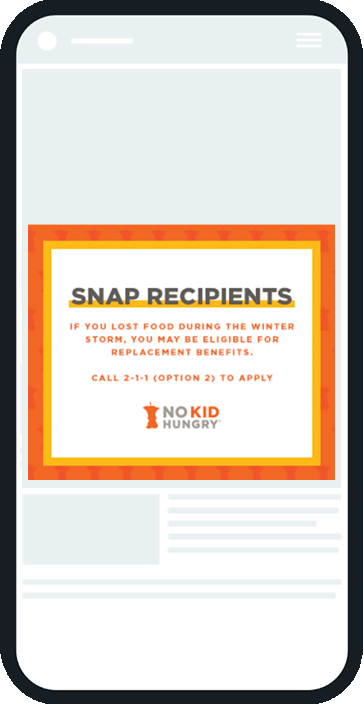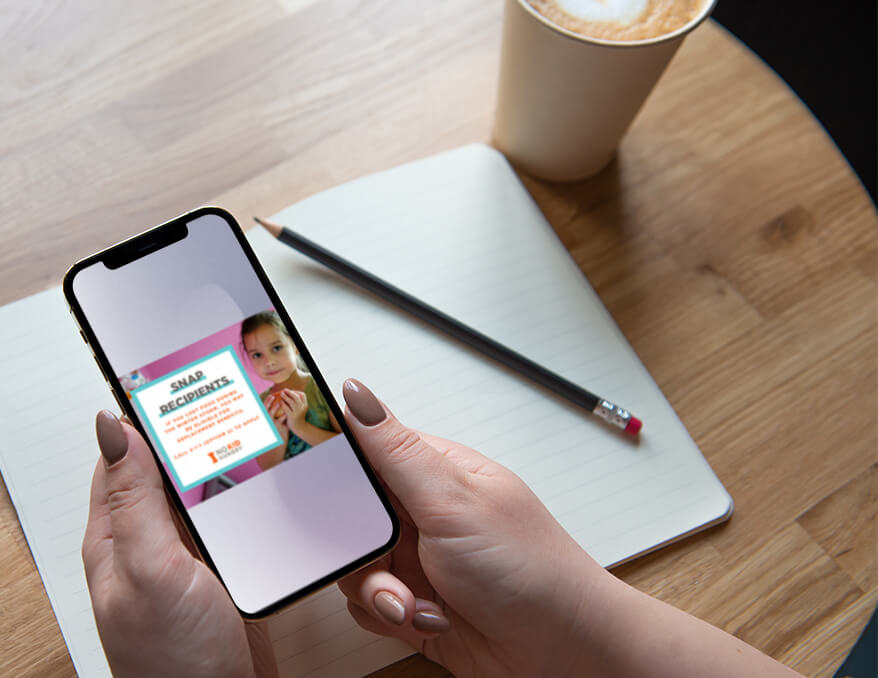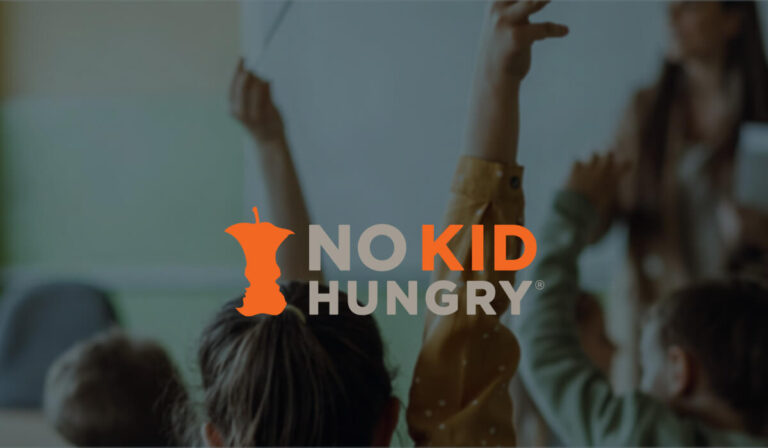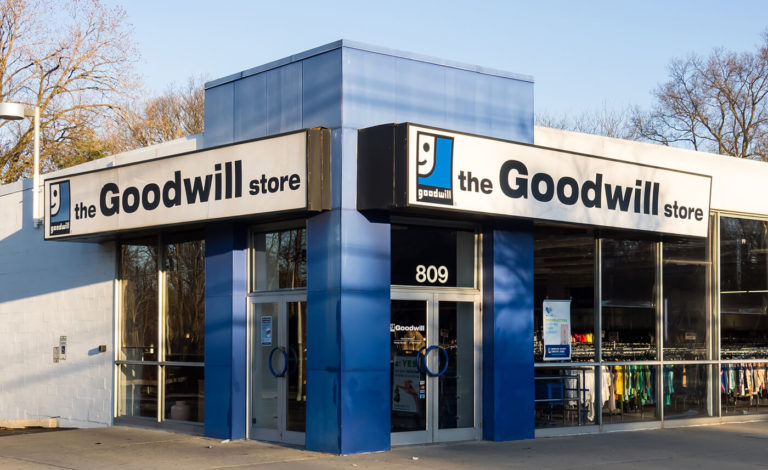During the deadly winter storms in 2021, millions of Texans experienced loss of electricity, freezing temperatures, and food shortages. When the governor of Texas announced that recipients of Supplemental Nutrition Assistance Program (SNAP) benefits would be eligible to receive replacements for food that had been lost or destroyed, No Kid Hungry set out to ensure that hard-hit communities were aware of and claimed these benefits.
Because of our existing partnership, GroundTruth and No Kid Hungry were able to get a campaign up and running within our self-serve platform, Ads Manager, in a matter of a few days. GroundTruth, which has remote employees within Texas, also wanted to give back to this community and matched No Kid Hungry’s budget to double the reach and impact of this three-week-long campaign.
Real-World Solutions
Geo-Targeting allowed No Kid Hungry to drive all media impressions within the state of Texas. Because this campaign was specific to Texas SNAP recipients, targeting specific zip codes powered a hyper-focused campaign and eliminated wasted impressions. This tactic was responsible for almost 60% of all media impressions and successfully drove a Secondary Action Rate (SAR) of 2.74% from the landing page. SAR is a performance measure based on the percentage of ads that result in action beyond the initial ad click, which in this case was the option between a click-to-call or a click to learn more function for users to get started with the benefits process.
Demographic Audience Targeting was also implemented to connect with Hispanic audiences in Spanish language creative ads to ensure more effective messaging and remove language barriers for families to receive benefits. Over 2.4K users who were served the No Kid Hungry creative ads clicked to learn more.

Real Business Results
Overall, the campaign successfully drove over 6.2K mobile users to click to learn more, with an average SAR of 2.57%. Secondary action rates were 24% higher than average on Fridays compared to other days of the week, likely as people had more free time leading into the weekend to explore benefit details. Because of the time-sensitive nature of this initiative, connecting communities with these lifeline resources swiftly was key. Getting crucial information in front of the right audiences was more important than ever and highlights.

By the Numbers
Mobile users clicked to learn more
Average Secondary Action Rate






